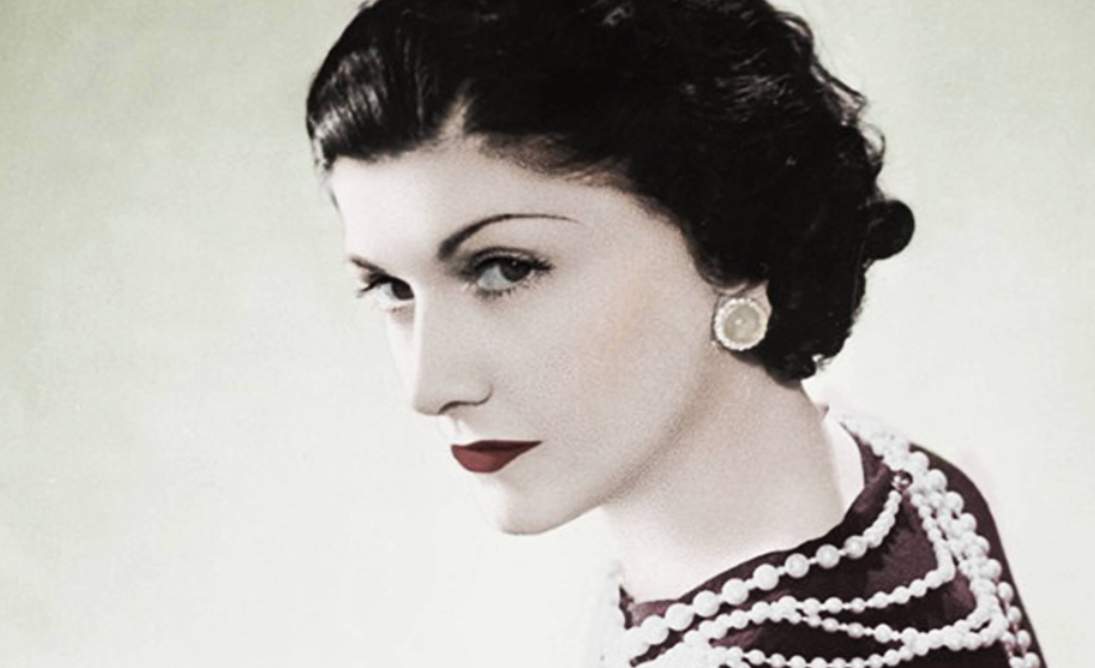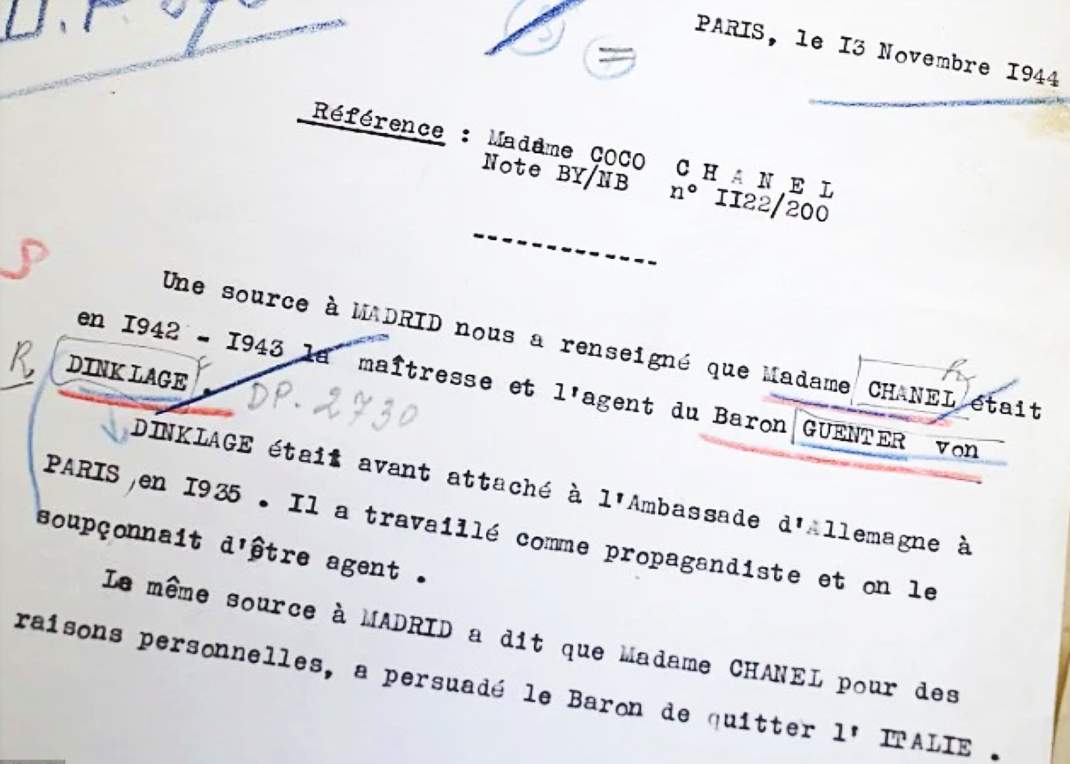Dressed to kill: Was Coco Chanel a Nazi Spy?
World renowned French designer Gabrielle ‘Coco’ Chanel was known by her Nazi handlers as agent F-7124. She mingled with the world’s power brokers and cozied up to a Nazi officer in German military intelligence when they lived at the Ritz Paris hotel, but whose side was she really on?

Sleeping with the enemy
"We know for a fact that she had a relationship during the war with a German aristocrat she had met in Paris in the ‘30s," her company, Chanel, said. "The timing of this romance with a German was unfortunate even if Baron Von Dincklage's mother was English and their relationship started before the war."
Baron Hans Günther von Dincklage was a German Abwehr spy, Nazi propagandist, and special attaché to the German Embassy in Paris, and their relationship is believed to have lasted for several years during and after WWII.
“The fashion icon may have been leading a double life,” the fact-checking website Snopes said after hundreds of boxes of the French Defense Ministry’s archives were released in 1999.
But why would a fashion icon risk everything she’d built?
"The brand new social experience where you activate your gaming skills as you train like a spy."
- TimeOut
Take on thrilling, high-energy espionage challenges across different game zones.


From poverty to international stardom
Chanel, the only fashion designer among Time's 100 most influential people of the 20th century, was reportedly born in a poorhouse hospice in 1883 and learned how to sew in an orphanage.
She began her career as a shop assistant in Moulins and worked for a tailor, altering breeches for cavalry officers. It was there that she met cavalry officer Étienne Balsan, her lover and a stepping stone from Moulins to Paris where she met wealthy investors who set her up in a shop.
By the 1920s, Chanel was moving in influential circles, friendly with both Britain’s Duke of Westminster and Winston Churchill, the future prime minister. Although Chanel was also a mistress to many of Europe’s influential men - including Britain’s Prince of Wales - she never married, concentrating instead on her business.
By the time the Germans occupied France in 1940, Chanel had shut her shops, however, and was living at the Paris Ritz where her lover, Baron Von Dincklage, resided alongside Nazis Hermann Göring and Joseph Goebbels.

Operation Modelhut
The Nazis had passed laws to ‘Aryanize’ businesses in German-occupied territories so when Pierre Wertheimer - who owned the majority of Chanel’s company - fled to the US in 1940, the designer wrote to Nazi party officials. She outlined her argument for the return of Parfums Chanel to her full ownership but was unsuccessful. Wertheimer had already transferred his share of the business to a non-Jewish friend.
German intelligence officers soon learned that Chanel was also upset that her nephew, André, was imprisoned in a PoW camp. A bargain was apparently struck: André would be released if Chanel acted as a go-between for the Nazis, passing information to her powerful Allied connections in Britain. It seemed the Germans wanted Britain to end the hostilities and use Chanel as a backdoor negotiator.
Exactly what took place during Chanel’s visit to Madrid in 1941 is not clear - records weren’t kept - but her nephew André returned home safely. Around this time, Chanel is believed to have become a Nazi spy with the code name ‘Westminster’, a reference to her links to Britain’s Duke of Westminster, and given the agent number: F-7124, a French documentary L’Ombre D’un Doute revealed in 2014.
Chanel believed she could negotiate a peace treaty between the Nazis and Britain through PM Winston Churchill, suggests Hal Vaughan in Sleeping with the Enemy: Coco Chanel’s Secret War. Under Operation Modelhut (Model Hat), Chanel hoped to initiate talks with the British Embassy in Spain in 1944. Instead, a travel companion denounced her as an enemy agent. Not long after the liberation of Paris in August 1944, Chanel was arrested and interrogated in France.

Freedom and a fresh start
In the absence of hard evidence, the French initially let Chanel walk free. Why? Some biographers believe her release may have been orchestrated by Churchill, although Vaughan found no hard proof of this.
A French judge also issued an ‘urgent’ warrant to investigate Chanel’s wartime activities. This time, the judge wasn’t interested in her lovers. The court believed Chanel may have teamed up with a French traitor, Baron Louis de Vaufreland, who had worked as a Nazi recruiter.
Vaufreland had apparently traveled to Spain and identified men and women who could be recruited or coerced into spying for Nazi Germany, with Chanel possibly along to provide cover. Chanel called Vaufreland’s stories ‘fantasies’, however. Around this time, she moved to Switzerland to reestablish her brand in a neutral country.

In bed with the Nazis
Why did Chanel associate with the Nazis? Many articles mention her prejudice against the Jews, but Snopes fact-checkers found no proof of this: “In reality, there are no quotes by her or any actions that she took that would indicate she was in any way an anti-Semite.”
In Sleeping with the Enemy, author Hal Vaughan said Coco Chanel believed fully in putting herself first: “Chanel was, very simply put, an enormous opportunist who did what she had to do to get along.”
“I have no feelings against Chanel,” he added. “You can’t put someone like Klaus Barbie and Chanel in the same category: she didn’t kill anybody; she didn’t torture anybody.”
After the war, Chanel successfully re-established herself. By 1947, she’d settled her legal dispute with the company's majority shareholder, Pierre Wertheimer, and agreed to a deal that would see Wertheimer pay a settlement and expenses for the rest of her life. After eight years in exile, Chanel returned to Paris and the Ritz Hotel where she died at home, age 87, having lived up to her mantra: "I don’t care what you think of me. I don’t think of you at all."
SPYSCAPE+

Join now to get True Spies episodes early and ad-free every week, plus subscriber-only Debriefs and Q&As to bring you closer to your favorite spies and stories from the show. You’ll also get our exclusive series The Razumov Files and The Great James Bond Car Robbery!


Gadgets & Gifts
Explore a world of secrets together. Navigate through interactive exhibits and missions to discover your spy roles.
Your Spy Skills
We all have valuable spy skills - your mission is to discover yours. See if you have what it takes to be a secret agent, with our authentic spy skills evaluation* developed by a former Head of Training at British Intelligence. It's FREE so share & compare with friends now!
* Find more information about the scientific methods behind the evaluation here.


Stay Connected
Follow us for the latest
TIKTOK
INSTAGRAM
X
FACEBOOK
YOUTUBE